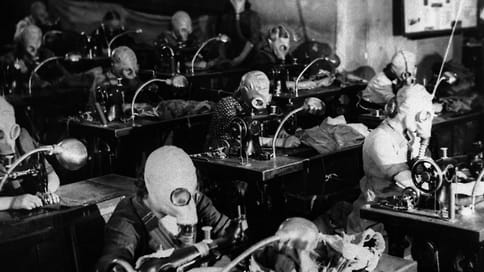Kommersant-History No. 9 (142) – Picture of the day – Kommersant
[ad_1]

Do you know which ideas carry the greatest danger? No, we are not talking about circus performances with the participation of predators. And not even about the notions used in diplomacy to express dissatisfaction with one’s government with the actions of someone else, although documents so called often do not extinguish, but exacerbate interstate conflicts.
We are talking about ideas about events and phenomena that are so well-established that they are perceived as the ultimate truth. Let’s take a simple example. It is well known that the inhabitants of the monasteries from time immemorial spent their time in prayers and the labors of the righteous. Is not it? But 300 years ago, on September 11, 1722*, the members of the Most Holy Governing Synod approved the decree “On teaching nuns to needlework and crafts.” About him – publication “The craftswomen should not beat any of them”.
There is an idea that before the revolution Russia exported to foreign markets mainly bread and timber. But there was a product, the export of which the country ranked first in the world. About this – text “Exporters are forced to do this”.
Much more unpleasant, and sometimes dangerous, are the representations created by propaganda. Every Soviet person in history lessons heard about the terrible “Kornilov rebellion”, which threatened the revolution in 1917 and was suppressed solely with the help of the Bolsheviks. It just had nothing to do with reality. About what really happened – our selection “Disturbing news of troop movements is coming”.
To the same type of ideas that raised the power of power to the skies is the conviction that during the years of industrialization all the grandiose plans of the party and government were put into practice. About why the most ambitious project of the Kremlin did not come true – article “The First Invincible Fortress”.
The creation of false ideas was not only for the needs of domestic rulers. European states created during the Civil War around Russia, as it was argued, an iron ring of sanctions and visa restrictions. But the most common corruption made it absolutely permeable. About the man who brought the blockade to naught – material “Thanks to the real talent to give people bribes”.
However, the most dangerous ideas are those that give people absolutely false information about the most important events of the past. So, in Soviet times, the Russian-Ukrainian wars were actually deleted from the national history. About how it happened and what prevented – text “Putting him to flight, they burned the cities”.
About them, dangerous ideas, from which it is worth freeing yourself once and for all, this issue of the monthly “Kommersant-History”.
Content
“The craftswomen should not beat any of them” / How productivity was increased in monasteries
“Exporters are forced to do this” / How Europe got hooked on Russian eggs
“Disturbing news of troop movements is coming” / Who failed the Supreme Commander
“Thanks to the real talent to give people bribes” / To whom Ostap Bender was no match
“Putting him to flight, they burned the cities” / How long do Russian-Ukrainian wars usually last
*All dates before February 1, 1918 are given according to the old style.
[ad_2]
Source link








